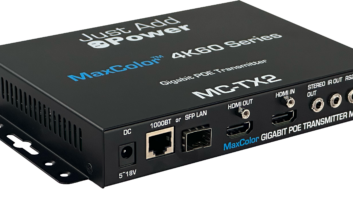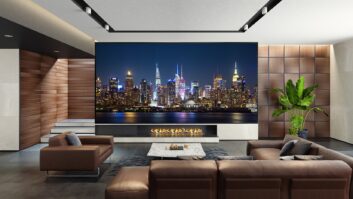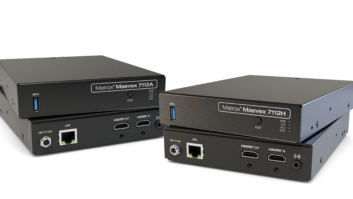
In years past, video display technology became mostly an afterthought at CEDIA EXPO trade shows, as many of the traditional display manufacturers were either restructuring or just flat out avoiding the CI channel. I’m happy to report that last week at CEDIA in Dallas, display technologies seemed to have experienced a rebirth. Even though many of the traditional panel manufacturers still were not exhibiting at the show, there were plenty of video products to see at the show.
4K Everywhere
One of the big trends that we continued to see this year at CEDIA was the emergence and general acceptance of 4K video. Everywhere you looked, 4K was the focus and everyone seemed to be on board with it. There were many manufacturers who were showing a plethora of 4K switchers and matrix devices. Every HDMI cable was rated for 4K, every balun was rated for 4K, etc., etc. We’re finally at that point where we are going to be really selling these 4K devices every day.
One of the biggest shifts in 4K that I think will come out of this show is DISH’s 4K Joey device. This is an opportunity to get 4K into the home of every American home (notice I said “American home” because we in Canada can’t utilize these devices and our telcos are usually about three to four years behind the curve). Just like the HD transition a few years ago, 4K is dealing with the same content/technology adoption issue. For 4K to be truly successful we need the content stream to be vast and easily accessible to the general populace. This move with the Joey, and by extension the sheer size of the booth, shows DISH’s commitment to the channel and its desire to help bring this content to the general population in a way that previously hasn’t existed. As much as we in the industry traditionally love to hate the giant telecoms, they really are the driving force behind the user adoption level. Even though companies like Netflix and the like are pushing 4K content and network-based delivery systems that is still a limited market as of today. But when a telecom makes a 4K set-top box the defacto standard device box for its client base, we’ll see that true widespread consumer adoptions of the technology.
Bringing Cinema Home
There has always been a push for the dedicated home theater experience because that is really what this industry is built on. It fades when the economy is sluggish but always roars back when the economy shows positives signs. This year continues that trend with the added bonus of, “bringing the commercial theater experience into the home.” This year I’ve seen more demos of commercial-grade laser projection systems that would be easily found in your local multiplex but are designed for your home. These aren’t just your basic home cinema projectors, but true-to-form large-format projectors that allow an integrator to create a truly theatrical experience in their clients’ homes. What has really pushed this boundary is the proliferation of laser projection and the vibrancy that it can achieve.
It’s amazing to see the change that laser technology and High Dynamic Range (HDR) can make in a large-format projection system. Enhanced by Dolby Atmos, DTS:X, or Auro3D sound processing, the high-end theater experience has really become in most cases the best immersive experience around.







